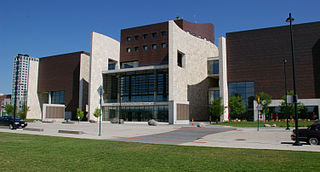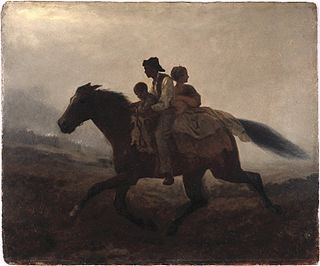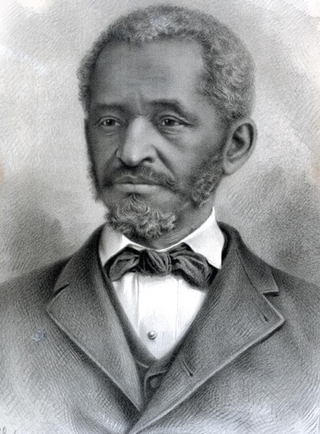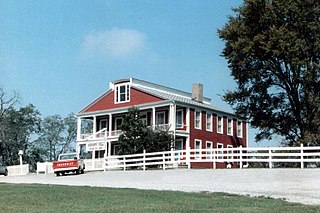
The Underground Railroad was a network of secret routes and safe houses established in the United States during the early to mid-19th century. It was used by enslaved African Americans primarily to escape into free states and from there to Canada. The network, primarily the work of free African Americans, was assisted by abolitionists and others sympathetic to the cause of the escapees. The slaves who risked capture and those who aided them are also collectively referred to as the passengers and conductors of the "Underground Railroad". Various other routes led to Mexico, where slavery had been abolished, and to islands in the Caribbean that were not part of the slave trade. An earlier escape route running south toward Florida, then a Spanish possession, existed from the late 17th century until approximately 1790. However, the network now generally known as the Underground Railroad began in the late 18th century. It ran north and grew steadily until the Emancipation Proclamation was signed by President Abraham Lincoln. One estimate suggests that, by 1850, approximately 100,000 slaves had escaped to freedom via the network.

Bracken County is a county located in the U.S. state of Kentucky. As of the 2020 census, the population was 8,400. Its county seat is Brooksville. The county was formed in 1796. Bracken County is included in the Cincinnati-Middletown, OH-KY-IN Metropolitan Statistical Area.

William Still was an African-American abolitionist based in Philadelphia, Pennsylvania. He was a conductor of the Underground Railroad and was responsible for aiding and assisting at least 649 slaves to freedom towards North. Still was also a businessman, writer, historian and civil rights activist. Before the American Civil War, Still was chairman of the Vigilance Committee of the Pennsylvania Anti-Slavery Society, named the Vigilant Association of Philadelphia. He directly aided fugitive slaves and also kept records of the people served in order to help families reunite.

The Fugitive Slave Act or Fugitive Slave Law was passed by the United States Congress on September 18, 1850, as part of the Compromise of 1850 between Southern interests in slavery and Northern Free-Soilers.

In the United States before 1865, a slave state was a state in which slavery and the internal or domestic slave trade were legal, while a free state was one in which they were prohibited. Between 1812 and 1850, it was considered by the slave states to be politically imperative that the number of free states not exceed the number of slave states, so new states were admitted in slave–free pairs. There were, nonetheless, some slaves in most free states up to the 1840 census, and the Fugitive Slave Act of 1850 specifically stated that a slave did not become free by entering a free state.

The National Underground Railroad Freedom Center is a museum in downtown Cincinnati, Ohio, based on the history of the Underground Railroad. Opened in 2004, the Center also pays tribute to all efforts to "abolish human enslavement and secure freedom for all people."

In the United States, fugitive slaves or runaway slaves were terms used in the 18th and 19th centuries to describe people who fled slavery. The term also refers to the federal Fugitive Slave Acts of 1793 and 1850. Such people are also called freedom seekers to avoid implying that the enslaved person had committed a crime and that the slaveholder was the injured party.

John Rankin was an American Presbyterian minister, educator and abolitionist. Upon moving to Ripley, Ohio, in 1822, he became known as one of Ohio's first and most active "conductors" on the Underground Railroad. Prominent pre-Civil War abolitionists William Lloyd Garrison, Theodore Weld, Henry Ward Beecher, and Harriet Beecher Stowe were influenced by Rankin's writings and work in the anti-slavery movement.

Lewis Hayden escaped slavery in Kentucky with his family and escaped to Canada. He established a school for African Americans before moving to Boston, Massachusetts to aid in the abolition movement. There he became an abolitionist, lecturer, businessman, and politician. Before the American Civil War, he and his wife Harriet Hayden aided numerous fugitive slaves on the Underground Railroad, often sheltering them at their house.

The Crenshaw House is an historic former residence and alleged haunted house located in Equality Township, Gallatin County, Illinois. The house was constructed in the 1830s. It was the main residence of John Crenshaw, his wife, and their five children.

John Hart Crenshaw was an American landowner, salt maker, kidnapper and slave trader, based out of Gallatin County, Illinois.

The pre-American Civil War practice of kidnapping into slavery in the United States occurred in both free and slave states, and both fugitive slaves and free negroes were transported slave markets and sold, often multiple times. There were also rewards for the return of fugitives. Three types of kidnapping methods were employed: physical abduction, inveiglement of free blacks, and apprehension of fugitives. The enslavement, or re-enslavement, of free blacks occurred for 85 years, from 1780 to 1865.

Henry Walton Bibb, was an American author and abolitionist who was born into enslavement. Bibb told his life story in his Narrative of the Life and Adventures of Henry Bibb, An American Slave, which included many failed escape attempts followed finally by success when he escaped to Detroit. After leaving Detroit to move to Canada with his family, due to issues with the legality of his assistance in the Underground Railroad, he founded the abolitionist newspaper, Voice of the Fugitive. He lived in Canada until his death.

The history of slavery in Kentucky dates from the earliest permanent European settlements in the state, until the end of the Civil War. Kentucky was classified as the Upper South or a border state, and enslaved African Americans represented 24% by 1830, but declined to 19.5% by 1860 on the eve of the Civil War. The majority of enslaved people in Kentucky were concentrated in the cities of Louisville and Lexington, in the fertile Bluegrass Region as well the Jackson Purchase, both the largest hemp- and tobacco-producing areas in the state. In addition, many enslaved people lived in the Ohio River counties where they were most often used in skilled trades or as house servants. Few people lived in slavery in the mountainous regions of eastern and southeastern Kentucky. Those that did that were held in eastern and southeastern Kentucky served primarily as artisans and service workers in towns.

The Underground Railroad in Indiana was part of a larger, unofficial, and loosely-connected network of groups and individuals who aided and facilitated the escape of runaway slaves from the southern United States. The network in Indiana gradually evolved in the 1830s and 1840s, reached its peak during the 1850s, and continued until slavery was abolished throughout the United States at the end of the American Civil War in 1865. It is not known how many fugitive slaves escaped through Indiana on their journey to Michigan and Canada. An unknown number of Indiana's abolitionists, anti-slavery advocates, and people of color, as well as Quakers and other religious groups illegally operated stations along the network. Some of the network's operatives have been identified, including Levi Coffin, the best-known of Indiana's Underground Railroad leaders. In addition to shelter, network agents provided food, guidance, and, in some cases, transportation to aid the runaways.
George DeBaptiste was a prominent African-American conductor on the Underground Railroad in southern Indiana and Detroit, Michigan. Born free in Virginia, he moved as a young man to the free state of Indiana. In 1840, he served as valet and then White House steward for US President William Henry Harrison, who was from that state. In the 1830s and 1840s DeBaptiste was an active conductor in Madison, Indiana. Located along the Ohio River across from Kentucky, a slave state, this town was a destination for refugee slaves seeking escape from slavery.

Camp Greene was the site of a training camp for the 1st United States Colored Infantry Regiment and other Colored Troops on Mason's Island, now known as Theodore Roosevelt Island, in Washington, D.C. The island was also a refugee camp for freedom seekers. It is situated in the Potomac River. It has been made an Underground Railroad site on the National Park Service's Network to Freedom.
Kentucky raid in Cass County (1847) was conducted by slaveholders and slave catchers who raided Underground Railroad stations in Cass County, Michigan to capture black people and return them to slavery. After unsuccessful attempts, and a lost court case, the Fugitive Slave Act of 1850 was enacted. Michigan's Personal Liberty Act of 1855 was passed in the state legislature to prevent the capture of formerly enslaved people that would return them to slavery.
Wright Modlin or Wright Maudlin (1797–1866) helped enslaved people escape slavery, whether transporting them between Underground Railroad stations or traveling south to find people that he could deliver directly to Michigan. Modlin and his Underground Railroad partner, William Holden Jones, traveled to the Ohio River and into Kentucky to assist enslave people on their journey north. Due to their success, angry slaveholders instigated the Kentucky raid on Cass County of 1847. Two years later, he helped free his neighbors, the David and Lucy Powell family, who had been captured by their former slaveholder. Tried in South Bend, Indiana, the case was called The South Bend Fugitive Slave Case.

Slave markets and slave jails in the United States were places used for the slave trade in the United States. Slave pens, also known as slave jails, were used to temporarily hold enslaved people until they were sold, or to hold fugitive slaves, and sometimes even to "board" slaves while traveling. Slave markets were any place where sellers and buyers gathered to make deals. Some of these buildings had dedicated slave jails, others were negro marts to showcase the slaves offered for sale, and still others were general auction or market houses where a wide variety of business was conducted, of which "negro trading" was just one part.
















